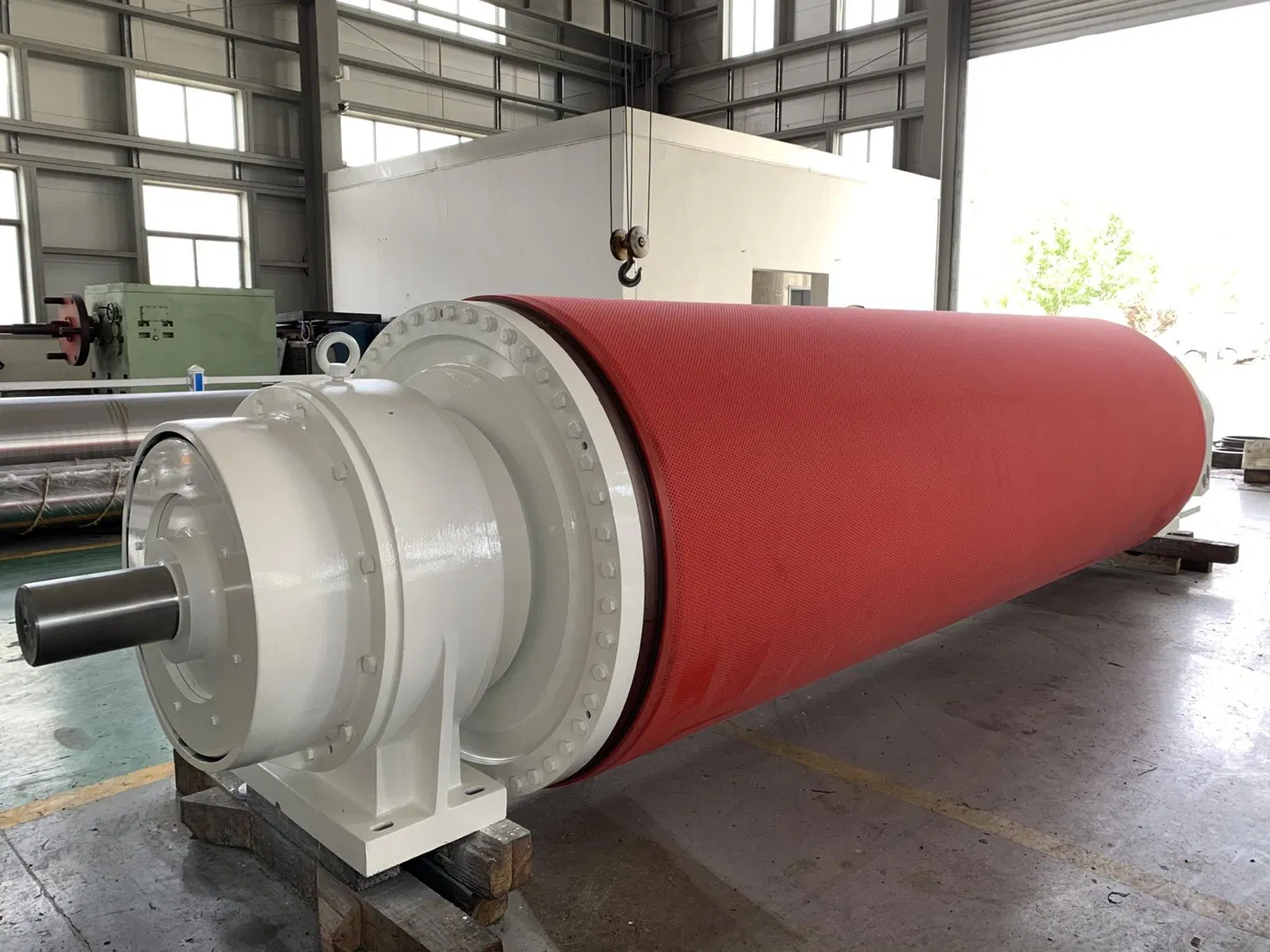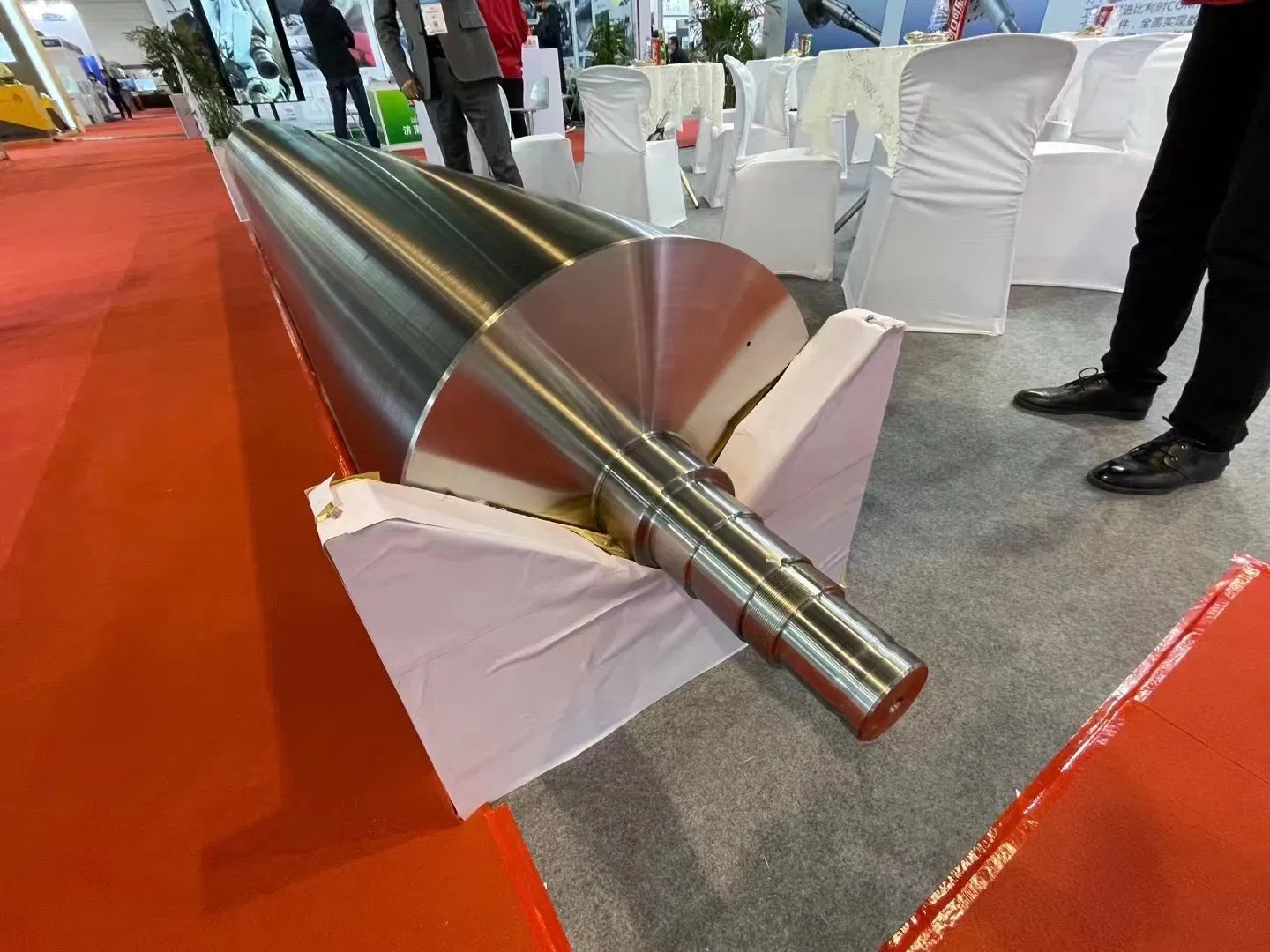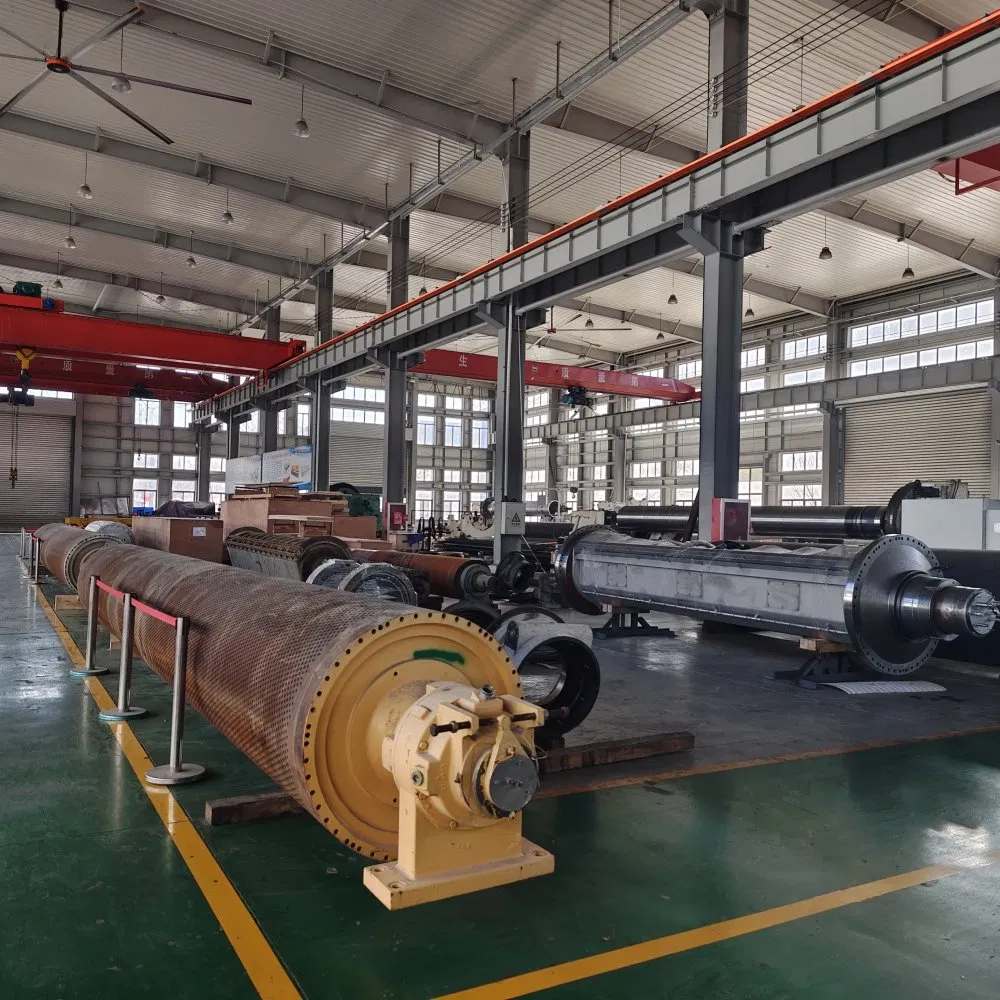Anatomy of Efficiency: Types of Paper Mill Rolls and Their Functions
The journey of paper from a slurry of fibers to a finished sheet involves multiple stages, and each stage utilizes specialized paper mill rolls. Understanding their distinct roles is key to appreciating the complexity and ingenuity of paper manufacturing. Interestingly enough, while they all appear cylindrical, their internal structures, surface properties, and materials are meticulously designed for specific purposes.Forming Section Rolls
In the forming section, the initial slurry of pulp fibers is laid onto a moving screen to begin the dewatering process.
- Breast Rolls: Located at the very beginning of the paper machine, the breast roll supports the forming fabric and helps distribute the pulp slurry evenly across its width. It's the first point of contact for the nascent paper web.
- Couch Rolls: Positioned at the end of the forming section, the couch roll is crucial for separating the newly formed paper web from the forming fabric. It often incorporates suction to remove additional water, providing initial strength to the fragile web before it moves to the press section.
Press Section Rolls
The press section is where mechanical dewatering takes place, significantly increasing the dry content of the paper web. This is achieved by passing the web through a series of nips formed by two rolls pressing against each other.
- Suction Press Rolls: These rolls feature a perforated shell with an internal suction box. As the web passes over the roll, vacuum pulls water out of the sheet and into the perforations, dramatically reducing moisture content.
- Blind-Drilled Rolls: Similar to suction rolls but without the internal vacuum, these rolls have blind holes on their surface that collect water pressed out of the web, preventing rewetting.
- Grooved Rolls: These rolls have circumferential grooves that allow water to escape from the nip, improving dewatering efficiency and reducing crushing of the paper web.
- Granite Rolls: Traditionally made from solid granite, these rolls offer excellent stiffness and a smooth, hard surface, crucial for achieving uniform pressing. Modern alternatives often use synthetic materials.
Dryer Section Rolls
After the press section, the paper web still contains a significant amount of water, which is removed through evaporation in the dryer section.
- Dryer Cylinders: These are large, steam-heated cast iron or steel cylinders that transfer heat to the paper web, causing the remaining water to evaporate. They are typically arranged in multiple groups, with the paper weaving over and under them. Their surface temperature must be precisely controlled to ensure even drying and prevent scorching.
Calender and Reel Section Rolls
The final stages of paper production involve finishing the surface and winding the paper into large rolls.
- Calender Rolls: These rolls are used to smooth, densify, and improve the gloss of the paper surface. The paper passes through a series of nips in a calender stack, where pressure and sometimes heat are applied. Different types include machine calenders (integrated into the paper machine) and supercalenders (off-line for high-gloss papers).
- Reel Spools/Winder Rolls: Once the paper is finished, it is wound onto large steel spools or cores to form jumbo rolls, which are then transported to converting operations. Winder rolls precisely control the tension and winding profile to ensure a high-quality, stable roll.

The Science of Durability: Materials, Coatings, and Precision Engineering
The demanding environment within a paper mill necessitates that paper mill rolls are not only functional but also incredibly durable. Their construction involves a sophisticated blend of material science, advanced manufacturing techniques, and meticulous engineering. It's worth noting that the choice of material and surface treatment directly impacts a roll's lifespan, its performance characteristics, and ultimately, the quality of the paper produced.Core Materials
Historically, cast iron was a prevalent material for many rolls due to its excellent damping properties and ease of casting. However, modern demands for higher speeds, greater strength, and lighter weight have led to the widespread use of other materials:
- Steel: High-strength steel alloys are commonly used for their superior mechanical properties, allowing for thinner shells and lighter rolls without compromising stiffness.
- Composite Materials: For certain applications, especially where weight reduction and corrosion resistance are critical, advanced composite materials like carbon fiber reinforced polymers are gaining traction. These offer exceptional strength-to-weight ratios and can be tailored for specific performance needs.
Surface Coatings and Covers
The surface of a roll is where the magic happens, directly interacting with the paper web and often facing the harshest conditions. Therefore, specialized coatings and covers are applied to enhance performance and durability.
- Rubber Covers: Widely used on press rolls, rubber covers provide a resilient, deformable surface that helps to evenly distribute pressure across the nip, improving dewatering and preventing sheet crushing. Different rubber compounds are formulated for specific hardness, chemical resistance, and release properties.
- Polymer Covers: Modern polymer composites offer superior wear resistance, chemical stability, and release characteristics compared to traditional rubber. They can be engineered to withstand higher temperatures and pressures, contributing to longer roll life and reduced maintenance.
- Ceramic Coatings: Applied to rolls requiring extreme hardness, abrasion resistance, and corrosion protection, ceramic coatings (e.g., tungsten carbide, chrome oxide) are ideal for demanding applications like calender rolls or certain press rolls. They provide a very smooth, durable surface that enhances paper quality and reduces wear on the roll itself.
- Metallic Coatings: Chrome plating is sometimes used for its hardness and corrosion resistance, particularly on dryer cylinders or certain calender rolls.
Precision Engineering and Manufacturing
Manufacturing paper mill rolls is a high-precision endeavor. Each roll must be:
- Precisely Ground: The surface of the roll must be ground to extremely tight tolerances to ensure uniform pressure distribution across the entire width of the paper web. Any deviation can lead to uneven paper thickness, moisture profiles, or surface defects.
- Dynamically Balanced: Given the high rotational speeds, rolls must be perfectly balanced to prevent vibrations, which can cause wear on bearings, damage the paper web, and lead to machine downtime.
- Optimized for Crown: Many rolls are manufactured with a slight "crown" – a subtle taper from the center to the edges – to compensate for deflection under load. This ensures uniform pressure across the nip, even when the roll bends slightly.
Keeping the Wheels Turning: Maintenance and Longevity of Paper Mill Rolls
Even the most robustly engineered components require diligent care to ensure their longevity and optimal performance. For paper mill rolls, effective maintenance is not just about extending their lifespan; it's about minimizing downtime, ensuring consistent paper quality, and maximizing operational efficiency. In my experience, a proactive and systematic approach to maintenance can significantly reduce unforeseen breakdowns and costly repairs. The focus here is on "maintenance of paper machine rolls."Key Maintenance Practices
Regular and thorough maintenance routines are paramount:
- Cleaning: Rolls are constantly exposed to pulp fibers, chemicals, and water, leading to buildup on their surfaces. Regular cleaning prevents accumulation that can affect paper quality, cause uneven pressing, or lead to roll damage.
- Grinding and Resurfacing: Over time, roll surfaces wear unevenly, develop grooves, or become damaged. Periodic grinding restores the precise cylindrical shape and surface finish, ensuring uniform nip pressure and optimal performance. This is a critical aspect of "maintenance of paper machine rolls."
- Balancing: As mentioned, dynamic balancing is crucial. Rolls should be re-balanced periodically, especially after resurfacing or repair, to prevent vibrations that can lead to bearing failure and sheet quality issues.
- Bearing Inspection and Lubrication: Bearings are the unsung heroes supporting the massive weight and high-speed rotation of the rolls. Regular inspection for wear, proper lubrication, and timely replacement are vital to prevent catastrophic failures.
- Cover Inspection: For covered rolls, routine inspection for cracks, blisters, delamination, or excessive wear on the rubber or polymer covers is essential. Damaged covers can lead to uneven pressing, sheet breaks, and costly re-covering procedures.
- Nip Impression Analysis: Regularly checking the nip impression (the contact area between two rolls) helps ensure uniform pressure distribution. Deviations can indicate issues with roll alignment, crown, or surface integrity.
Common Issues and Troubleshooting
Despite best efforts, issues can arise. Common problems include:
- Uneven Wear: Can be caused by misalignment, uneven loading, or localized friction. Leads to inconsistent paper properties.
- Corrosion: Especially in wet sections, chemical exposure can lead to corrosion of roll bodies or internal components.
- Cracking: Stress, fatigue, or thermal shock can lead to cracks in roll shells, particularly in dryer cylinders.
- Delamination of Covers: Poor bonding or excessive stress can cause rubber or polymer covers to separate from the roll body.
- Vibration: Often a sign of imbalance, bearing issues, or roll eccentricity. Can lead to machine damage and poor paper quality.
Repair and Refurbishment
When rolls do suffer damage, they are often not simply discarded. Specialized facilities offer comprehensive repair and refurbishment services. This can include:
- Stripping old covers and applying new ones.
- Repairing cracks or surface damage through welding and machining.
- Grinding and balancing to restore original specifications.
- Upgrading materials or coatings for improved performance.

Innovation on a Roll: Future Trends and Advanced Technologies
The paper industry, while traditional in its core product, is constantly evolving, driven by demands for higher efficiency, better quality, and increased sustainability. This evolution extends directly to paper mill rolls, with significant advancements in materials, monitoring, and manufacturing. Many experts agree that the future of paper production will be heavily influenced by these technological leaps, particularly in "advanced paper mill roll technology."Smart Rolls and Predictive Maintenance
One of the most exciting developments is the advent of "smart rolls." These rolls are equipped with embedded sensors that can monitor various parameters in real-time, including:
- Temperature: Detecting hot spots can indicate bearing issues or uneven heating.
- Vibration: Early detection of imbalance or bearing wear, allowing for proactive maintenance.
- Pressure Distribution: Ensuring uniform nip pressure across the web, critical for consistent paper quality.
- Surface Wear: Monitoring the degradation of coatings or the roll surface itself.
Advanced Coatings and Materials
Research continues into developing next-generation coatings and materials that offer even greater performance:
- Nano-composite Coatings: Incorporating nanoparticles into polymer or ceramic matrices can create surfaces with enhanced hardness, lower friction, and superior release properties.
- Self-Healing Materials: While still in early stages for industrial applications, the concept of coatings that can self-repair minor damage could revolutionize roll longevity.
- Lightweight Composites: Further development of carbon fiber and other composite materials will lead to lighter, more energy-efficient rolls that can operate at higher speeds with less power consumption.
Sustainability and Energy Efficiency
The drive for sustainability is influencing roll design and operation:
- Reduced Energy Consumption: Lighter rolls and advanced bearing designs reduce the energy required to rotate them. More efficient dewatering in the press section reduces the energy needed for drying.
- Longer Lifespan and Recyclability: Designing rolls for extended operational life and ensuring that materials are recyclable or reusable at the end of their service life contributes to a circular economy.
- Water Management: Innovations in suction and grooved rolls continue to optimize water removal, reducing the overall water footprint of the paper-making process.

The Bottom Line: Optimizing Paper Production with Quality Rolls
Frankly speaking, the seemingly simple cylindrical shape of paper mill rolls belies their immense complexity and critical importance to the global paper industry. From the initial formation of the paper web to its final finishing and winding, these engineered components are continuously working under extreme conditions, dictating the pace, quality, and efficiency of the entire production line. Investing in high-quality paper mill rolls is not merely an expense; it's an investment in the operational integrity and profitability of a paper mill. Superior rolls lead to:- Improved Paper Quality: Uniform thickness, moisture profile, and surface finish.
- Increased Production Efficiency: Fewer sheet breaks, higher operating speeds, and reduced downtime.
- Lower Operating Costs: Reduced energy consumption, extended maintenance intervals, and longer component life.
- Enhanced Safety: Reliable components reduce the risk of unexpected failures.
For more detailed information, please visit our official website:Paper mill rolls
About the author: Dr. Evelyn Reed is a seasoned expert in industrial machinery and materials science, with over two decades of experience specializing in the pulp and paper industry. Her work focuses on optimizing manufacturing processes through advanced component design and predictive maintenance strategies. Dr. Reed is passionate about the intersection of engineering excellence and sustainable industrial practices, and frequently consults on enhancing the longevity and performance of critical equipment like paper mill rolls.


